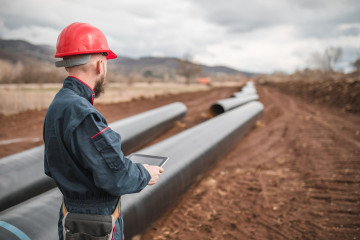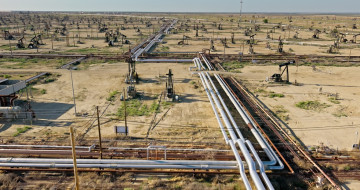The landscape of the energy industry is rapidly evolving and so are the expectations placed on pipeline operators. Communities, regulators, and investors alike are demanding more than technical excellence; they want transparency, inclusion, and a visible commitment to developing public trust. In this context, effective public engagement has become a strategic imperative rather than a communications afterthought.
To help companies meet these expectations, the American Petroleum Institute (API) has introduced API Recommended Practice (RP) 1185: Pipeline Public Engagement. This recommended practice offers practical guidance for how pipeline operators can foster meaningful relationships with local officials, landowners, tribal governments, environmental organizations, and other stakeholders. It complements and enhances the safety-focused API RP 1173 by addressing the human side of infrastructure development.
For organizations looking to implement RP 1185, the biggest question is often: Where do we begin and how do we prioritize our efforts? Below, we break down the fundamentals of RP 1185, offer a clear starting point for implementation, and share how Antea Group can be your trusted partner in the process.
Demystifying RP 1185: What It Really Means
At its core, API RP 1185 is about integrating public engagement into the fabric of your pipeline operations. It encourages proactive, transparent, and inclusive communication with stakeholders before, during, and after project execution. The recommended practice is flexible, scalable, and designed to meet the unique needs of companies operating in diverse regulatory environments and community contexts.
The emphasis is on relationship-building. That means not just providing information, but listening, responding, and building mutual understanding. Successful implementation of RP 1185 is recognized to enhance safety outcomes, mitigate reputational risk, and reinforce the social license to operate.
How to Get Started: A Strategic Path Forward
Similar to API RP 1173, launching a successful RP 1185 program begins with internal alignment. Senior leadership must treat public engagement as a strategic priority, not just a compliance task. Establishing a cross-functional implementation team typically composed of representatives from EHS, Public Affairs, Legal, and Operations can help ensure consistent messaging and unified action across the organization.
From there, the next critical step is identifying your stakeholders. While it's easy to focus on regulatory agencies and landowners, an effective approach will also consider local emergency responders, community advocates, environmental NGOs, internal employees, tribal representatives, and even local media. Understanding who your stakeholders are, what they care about, and how they prefer to communicate allows you to tailor your engagement efforts for greater effectiveness.
Once stakeholders are identified, it’s important to conduct a baseline assessment. What public engagement activities is your organization already participating in? Where are the strengths? Where are the gaps when compared to the principles of RP 1185? This is where Antea Group can add significant value with our EHS consultants performing a detailed gap analysis and coming alongside our clients to generate a roadmap for improvement.
The insights gained during this assessment phase feed directly into the development of a tailored engagement strategy. This strategy should be rooted in clear, measurable goals. Are you seeking to increase community understanding of pipeline safety? Reduce local opposition to a new project? Establish long-term partnerships with Indigenous communities? Whatever the aim, your strategy should also include key messaging themes, selected communication channels, and well-defined feedback mechanisms to ensure dialogue is a two-way street.
Prioritization is essential, especially when resources are limited. Start by focusing on areas with the highest potential impact, communities near new construction, densely populated regions, environmentally sensitive zones, or locations with a history of public concern. While it's important to capture early wins through high-visibility efforts, it's equally vital to plan for long-term, sustained engagement.
Implementation requires more than a written plan. Staff at all levels, especially those with community-facing roles, should be trained on the critical RP 1185 principles, effective communication techniques, and cultural competency. This will ensure that your team speaks with one voice, builds trust through consistency, and knows how to respond when tensions or concerns arise.
Finally, like any good management system, public engagement should be tracked and continuously improved. Organizations must establish ways to monitor progress, capture stakeholder feedback, and adjust their strategies based on what they learn. Metrics might include public sentiment, the number of resolved community concerns, attendance at engagement events, or the frequency of two-way communications. This iterative approach mirrors the continuous improvement cycle emphasized within RP 1173, reinforcing the alignment between safety and public trust.
Why This Matters: The Value of Getting Engagement Right
A well-executed public engagement strategy offers substantial benefits including strengthening relationships within communities, reducing project delays and most importantly building long-term trust that translates into safer operations and stronger reputations.
Public engagement done right is a risk management tool, a reputation builder, and catalyst for operational success. It allows operators to proactively address issues before they escalate, transforming potential conflict into collaboration.
Partnering with Antea Group for Public Engagement Success
At Antea Group, we understand the strategic importance of stakeholder trust. Our team has deep expertise in developing public engagement programs that align with RP 1185 while supporting broader corporate responsibility goals.
We offer services that span the full implementation lifecycle from stakeholder identification and engagement planning to training, reporting, and performance monitoring. Whether you’re launching your first engagement initiative or looking to enhance an existing program, we help you set meaningful goals, communicate effectively, and demonstrate impact to both communities and investors.
Final Thoughts
API RP 1185 is not just another guideline, it’s a forward-looking framework for building trust, fostering collaboration, and driving safer, more successful pipeline operations. In an era of increasing scrutiny and stakeholder activism, companies that engage thoughtfully and transparently will be better positioned to succeed.
If you’re ready to build stronger relationships and proactively manage stakeholder expectations, Antea Group is here to help.
Stay in the loop with our monthly e-newsletter, The New Leaf. We’re here to keep you informed, enlightened, and entertained with the latest in EHS and sustainability. Don’t miss out on the insights and stories that matter to you!✨ Ready to turn over a new leaf? Sign up now!
Have any questions?
Contact us to discuss your environment, health, safety, and sustainability needs today.






